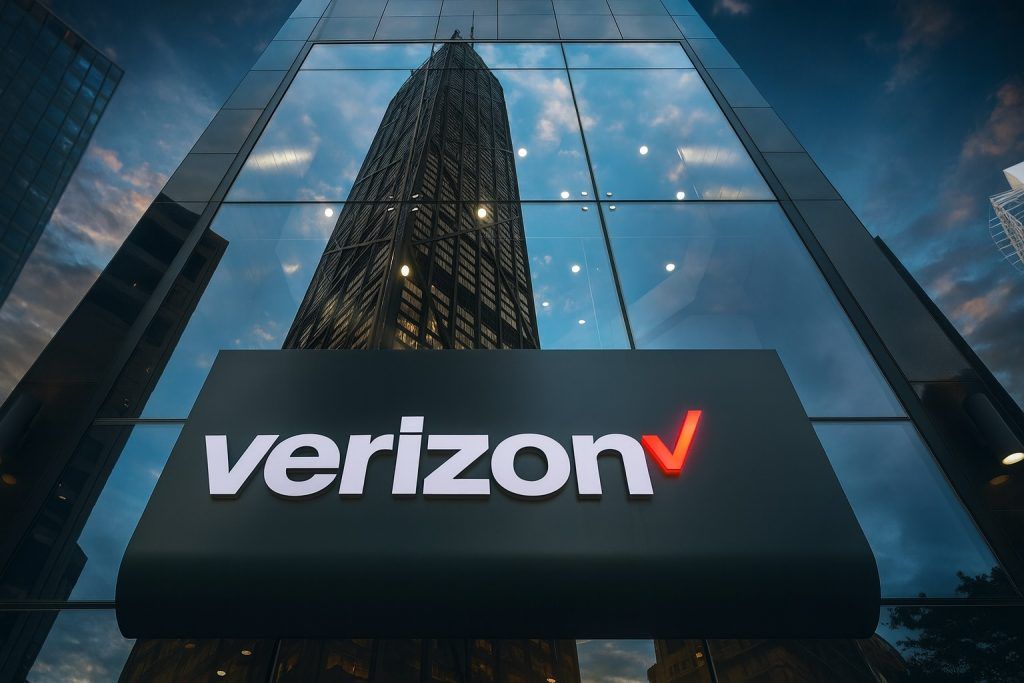Netflix stock (NASDAQ: NFLX) ended Thursday, November 20, 2025 under pressure, as investors continued to digest the company’s recent 10‑for‑1 stock split, fresh analyst cuts, new sports rights with Major League Baseball, and escalating speculation about a potential bid for Warner Bros. Discovery.
Key takeaways on Netflix stock today
- Price action: Netflix closed around $105.7 per share, down roughly 3.9% on the day from about $110 on Wednesday, extending its post‑split pullback. [1]
- Post‑split comedown: Shares are now about 7% below their post‑split high earlier this week, after debuting around the mid‑$110s on a split‑adjusted basis. [2]
- Deal jitters: The stock remains under pressure after reports that Netflix is exploring an acquisition of Warner Bros. Discovery’s studio and streaming assets, a move analysts warn could be strategically risky and face heavy regulatory scrutiny. [3]
- Big new sports contract: At the same time, Netflix just secured a three‑year media rights deal with Major League Baseball for documentaries and a special event game each season starting in 2026, marking a deeper push into live sports. [4]
- Analyst tone turns more cautious: Barclays and JPMorgan have recently cut their price targets on Netflix, and a shareholder law firm has announced an investigation, contributing to negative sentiment. [5]
- Long‑term story still strong: Despite near‑term volatility, Netflix’s latest quarter delivered 17% revenue growth to $11.5 billion and about 8.6% share of total TV viewing, with free cash flow expected to reach $9 billion this year and more than 300 million global subscribers by year‑end 2024. [6]
This article is for informational purposes only and does not constitute investment advice. Always do your own research or consult a licensed financial professional before making investment decisions.
Netflix stock price today (November 20, 2025)
Based on late‑day trading data, Netflix shares finished around $105.7, down almost 4% from yesterday’s close near $110. [7]
Over the last few sessions, post‑split trading has been volatile:
- Nov 17 (first full split‑adjusted session): Netflix traded near $110.
- Nov 18: A rally pushed shares into the mid‑$110s.
- Nov 19: The stock fell roughly 3.6% as investors reacted to analyst downgrades and growing concern over a potential Warner Bros. Discovery (WBD) deal. [8]
- Nov 20: Selling accelerated, bringing the price down to the mid‑$100s.
Trading volume has been heavy all week, reflecting the combination of mechanical post‑split repositioning, options re‑pricing, and genuine debate around Netflix’s next strategic chapter. [9]
The 10‑for‑1 Netflix stock split: what just happened?
Netflix’s current three‑digit share price is the direct result of its 10‑for‑1 stock split:
- Shareholders of record as of November 10, 2025 will receive nine additional shares for each share they owned.
- The split formally took effect after the close on Friday, November 14, and split‑adjusted trading began Monday, November 17. [10]
- Before the split, Netflix traded above $1,100 per share; after the split, the price dropped to roughly one‑tenth of that level, but investors simply own 10x as many shares—the underlying value of their stake is unchanged. [11]
Netflix has said the purpose of the split is to “reset the market price” of its common stock to a range that’s more accessible to employees participating in stock option programs and, by extension, to smaller retail investors. [12]
Some coverage has highlighted how the share price appeared to “plunge 90%” from about $1,140 to roughly $111, but this was purely a mechanical effect of the split, not a collapse in the company’s market cap. [13]
In the short term, splits can add noise:
- Index funds and options traders must rebalance.
- Liquidity improves, attracting more short‑term trading.
- Retail participation often rises as the stock “feels” cheaper, even though fundamentals are unchanged. [14]
That dynamic is one backdrop for today’s volatility.
Warner Bros. Discovery bid jitters are weighing on NFLX
The most controversial storyline around Netflix right now is its reported interest in buying Warner Bros. Discovery’s studio and streaming assets.
What’s being reported
- Investing.com and other outlets reported on Wednesday that Netflix stock fell around 2.7%–4% as investors reacted to news the company had retained a financial adviser and gained access to Warner Bros. Discovery’s internal financials, exploring a possible bid. [15]
- Morgan Stanley analyst Benjamin Swinburne outlined a scenario in which Netflix might pay roughly $20–$30 per WBD share, funded largely by cash and debt, to secure a century‑old studio, franchises like DC, Harry Potter and Lord of the Rings, and the HBO brand. [16]
- A Reuters summary of Bloomberg reporting adds that Netflix has signaled to Warner Bros. Discovery that, if a deal happens, it would continue releasing the studio’s films in theaters and honor existing theatrical contracts, rather than shifting everything immediately to straight‑to‑streaming. [17]
At the same time, trade publications and business press describe a broader “Hollywood bidding war”, with Paramount and Comcast (via NBCUniversal) also seen as potential bidders for Warner Bros. Discovery, raising uncertainty about price and deal structure. [18]
Why investors are nervous
Analysts and investors are focused on several risks:
- Regulatory overhang: As the largest global streaming platform, Netflix would likely face intense antitrust scrutiny if it tried to buy another major studio and premium network brand like HBO. [19]
- Integration risk: Absorbing Warner Bros. Discovery could force Netflix to rethink theatrical releases, third‑party licensing, and the future of HBO as a standalone service, potentially sacrificing nearly $2 billion in adjusted EBITDA in the short term if it shut down or radically reshaped the existing business. [20]
- Balance‑sheet pressure: A high‑priced, largely cash‑and‑debt‑financed deal might constrain Netflix’s flexibility just as it’s hitting its stride in free‑cash‑flow generation.
For now, no formal bid has been announced, and Netflix has not confirmed its intentions beyond general comments about always evaluating M&A opportunities. But the rumor alone has clearly become a short‑term drag on the stock.
A new inning: Netflix’s MLB media rights deal
On the positive side of today’s news flow, Netflix just took a notable step into sports:
- Major League Baseball announced new three‑year media rights deals with Netflix, NBCUniversal, and ESPNcovering the 2026–2028 seasons. [21]
- Under the agreement, Netflix will expand into live baseball by carrying MLB documentaries and streaming one special event game per year, marking its most formalized recurring sports package to date. [22]
- Media reports put the combined value of the three deals at nearly $800 million per year, with Netflix’s portion estimated around $50 million annually, far smaller than ESPN’s and NBC’s commitments but strategically important as a first real foothold in big‑league sports. [23]
For investors, the MLB deal matters less because of near‑term profit and more because of what it signals:
- Netflix is willing to pay (modestly) for live appointment viewing, something that can strengthen its ad‑supported tier and deepen engagement.
- The platform can test sports storytelling plus live events without taking on the massive financial risk of full regular‑season packages.
- It reinforces the idea that Netflix is evolving into a broader entertainment and live‑events platform, not just a scripted‑series streamer.
This news hasn’t been enough to offset the Warner Bros. anxiety in the share price today, but it’s a meaningful building block in the long‑term narrative.
Ad‑supported tier and core fundamentals remain strong
Beneath the headline volatility, Netflix’s core business trends are still robust.
Revenue, viewing share and free cash flow
- In its most recent quarter, Netflix reported 17% year‑over‑year revenue growth to about $11.5 billion. [24]
- The company captured roughly 8.6% of all television viewing (across streaming and traditional TV), underscoring its status as a dominant global media platform. [25]
- According to analysis syndicated by The Motley Fool and Nasdaq, Netflix is expected to generate about $9 billion in free cash flow in 2025, a dramatic improvement versus just a few years ago when the business was burning cash to fund content. [26]
- That same analysis notes that Netflix had over 300 million subscribers as of year‑end 2024, reinforcing the scale advantage that makes its content spending more efficient than many rivals. [27]
Ad tier momentum
Netflix’s ad‑supported offering is quickly becoming a major pillar:
- Comscore data, highlighted by Adweek, shows that 45% of Netflix’s U.S. households watched on its ad‑supported tier in August 2025, up from 34% a year earlier. [28]
- In earlier commentary, Netflix indicated it is on track to double ad revenue in 2025, and previously disclosed tens of millions of monthly active ad‑tier viewers—part of what some reports now peg at well over 90 million MAUs. [29]
Ad‑tier growth matters because it gives Netflix a second revenue stream (subscription + ads), which could cushion future slowdowns in subscriber growth and help fund expensive content and potential sports rights.
What Wall Street is saying: downgrades, cuts and mixed ratings
Today’s sell‑off is also tied to a shift in analyst sentiment after a long run‑up in the stock.
Recent moves include:
- Barclays slashed its price target from a pre‑split $1,100 to a split‑adjusted $110, maintaining an “equal weight”rating and signalling more conservative expectations for near‑term upside. [30]
- JPMorgan cut its target as well and reiterated a more cautious stance, citing concerns about subscriber trends and intensifying competition, even as Netflix remains a category leader. [31]
- A MarketBeat summary notes additional downgrade‑related selling and flags a shareholder law firm investigation (Schall Law) into potential misstatements, adding another short‑term overhang even though such investigations are relatively common for large‑cap tech names. [32]
- On the other side, some firms — including Sanford C. Bernstein and DZ Bank — have reiterated buy ratings, arguing that Netflix’s growth prospects and competitive moat still justify a premium valuation. [33]
At a price‑to‑earnings multiple around the mid‑40s, analysts at The Motley Fool describe Netflix as “far from a bargain” even if it’s an “outstanding company,” suggesting that new investors may want to wait for a more attractive entry point. [34]
In other words, Wall Street is split: the business looks strong, but the stock may have pulled forward a lot of future optimism.
Political and legal side notes: Congressional buying and law‑firm noise
Two additional storylines are floating around the Netflix ticker today:
- Congressional buying: A Benzinga report shows Louisiana Rep. Cleo Fields disclosed a purchase of Netflix stock valued between roughly $216,000 and $565,000, with the transaction dated October 31, 2025 and filed in November. [35]
- Congressional trades don’t change the fundamentals but can draw attention from traders who monitor “politician portfolios” as a sentiment indicator.
- Shareholder investigations: As noted in the MarketBeat news feed, law firms including the Schall Law Firm and others have launched or expanded investigations into Netflix, a fairly routine occurrence after periods of sharp price moves or accounting questions. [36]
Neither development fundamentally alters the long‑term thesis, but both contribute to the headline noise and risk perception around the stock in the short run.
Is Netflix stock a buy after today’s drop?
Whether Netflix is attractive at around $105–$106 per share depends on your time horizon and risk tolerance:
For the bulls, key points include:
- Strong fundamentals: double‑digit revenue growth, rising free cash flow, and a huge global subscriber base. [37]
- A rapidly scaling ad business that could meaningfully expand margins over time. [38]
- New growth levers like MLB rights and potential access to Warner Bros.’ IP if a deal happens on favorable terms. [39]
- A lower absolute share price post‑split that makes options and smaller share purchases more accessible.
For the bears (or cautious investors), key concerns are:
- A rich valuation relative to many other media and tech names, even after recent pullbacks. [40]
- Execution and regulatory risk around any potential Warner Bros. Discovery acquisition. [41]
- Competitive intensity from Disney+, Amazon Prime Video, YouTube, and regional players. [42]
- Legal and headline risk from shareholder investigations and shifting analyst sentiment. [43]
What to watch next
Investors tracking Netflix stock over the coming days and weeks may want to focus on:
- Any official news on Warner Bros. Discovery
- A formal bid, withdrawal, or competing offers could all move the stock dramatically. [44]
- Further color on the MLB partnership
- Details on game selection, production, and integration into Netflix’s ad‑tier strategy will help quantify the opportunity. [45]
- Ad‑tier metrics and guidance
- Updates on ad‑supported viewing share, pricing, and revenue targets will be critical to the long‑term margin story. [46]
- Next earnings report (expected January 2026)
- Analysts currently expect the next set of quarterly numbers around January 20, 2026, which will be the first full post‑split update and a key check‑in on subscriber growth and ad monetization. [47]
- Ongoing analyst revisions
- Additional upgrades, downgrades, or target changes—especially from large Wall Street banks—could continue to influence near‑term trading. [48]
Again, nothing in this article should be taken as a recommendation to buy or sell Netflix shares. But as of November 20, 2025, the picture is clear: Netflix stock is caught between powerful long‑term growth drivers and a cluster of new strategic and valuation questions, and the market is pricing in that uncertainty with a meaningful post‑split pullback.
References
1. www.investing.com, 2. www.investing.com, 3. www.investing.com, 4. www.reuters.com, 5. www.marketbeat.com, 6. 247wallst.com, 7. www.investing.com, 8. www.marketbeat.com, 9. www.investing.com, 10. www.investopedia.com, 11. www.investopedia.com, 12. www.investopedia.com, 13. www.nasdaq.com, 14. 247wallst.com, 15. www.investing.com, 16. www.investing.com, 17. www.reuters.com, 18. www.marketbeat.com, 19. www.investing.com, 20. www.investing.com, 21. www.reuters.com, 22. www.reuters.com, 23. www.reuters.com, 24. 247wallst.com, 25. 247wallst.com, 26. www.nasdaq.com, 27. www.nasdaq.com, 28. www.adweek.com, 29. www.adweek.com, 30. www.marketbeat.com, 31. www.investors.com, 32. www.marketbeat.com, 33. www.marketbeat.com, 34. www.nasdaq.com, 35. www.benzinga.com, 36. www.marketbeat.com, 37. 247wallst.com, 38. www.adweek.com, 39. www.reuters.com, 40. www.nasdaq.com, 41. www.investing.com, 42. www.adweek.com, 43. www.marketbeat.com, 44. www.reuters.com, 45. www.reuters.com, 46. www.adweek.com, 47. www.marketbeat.com, 48. www.marketbeat.com








